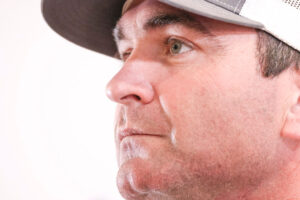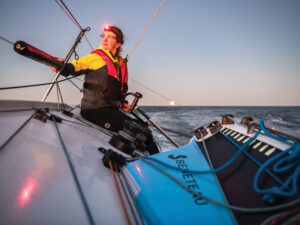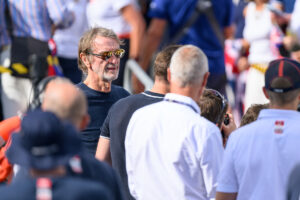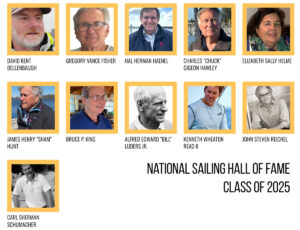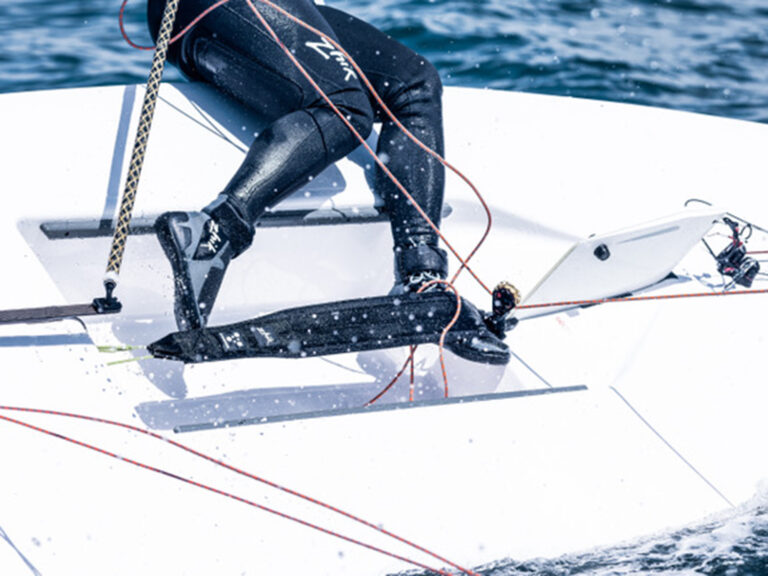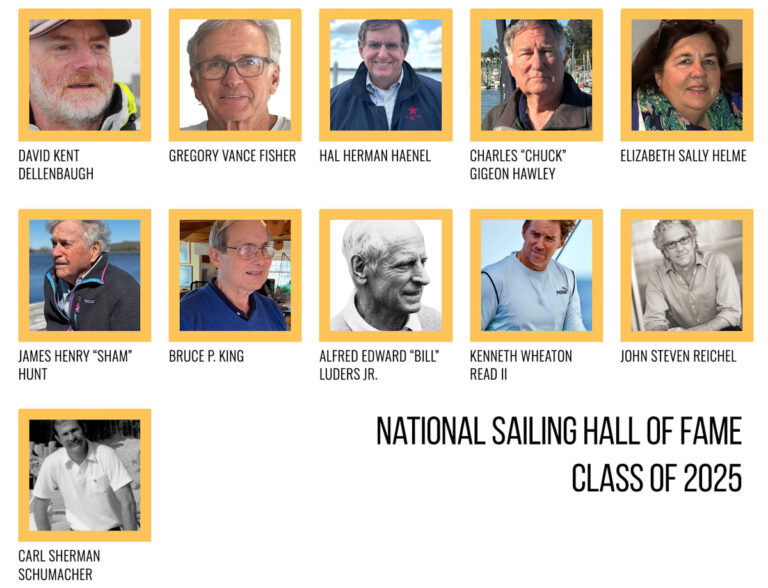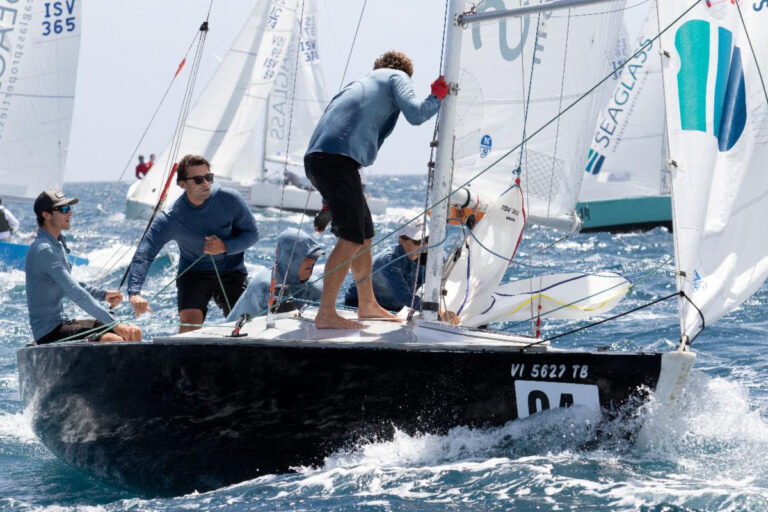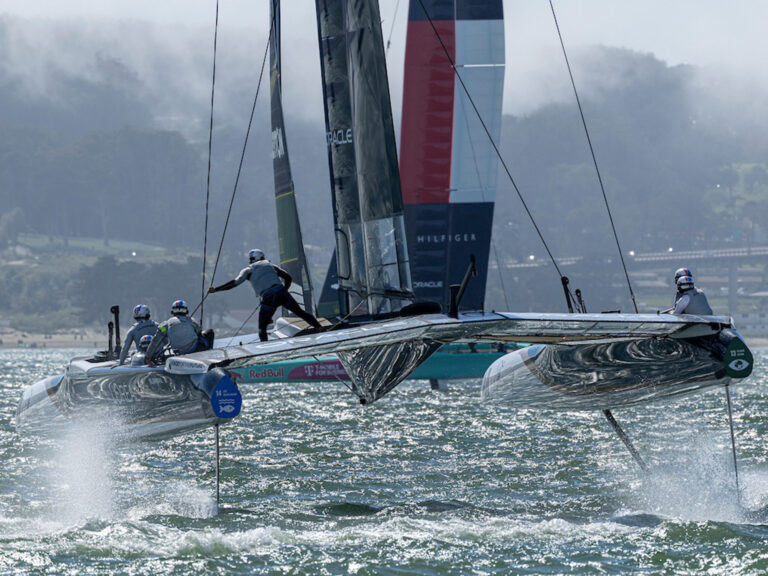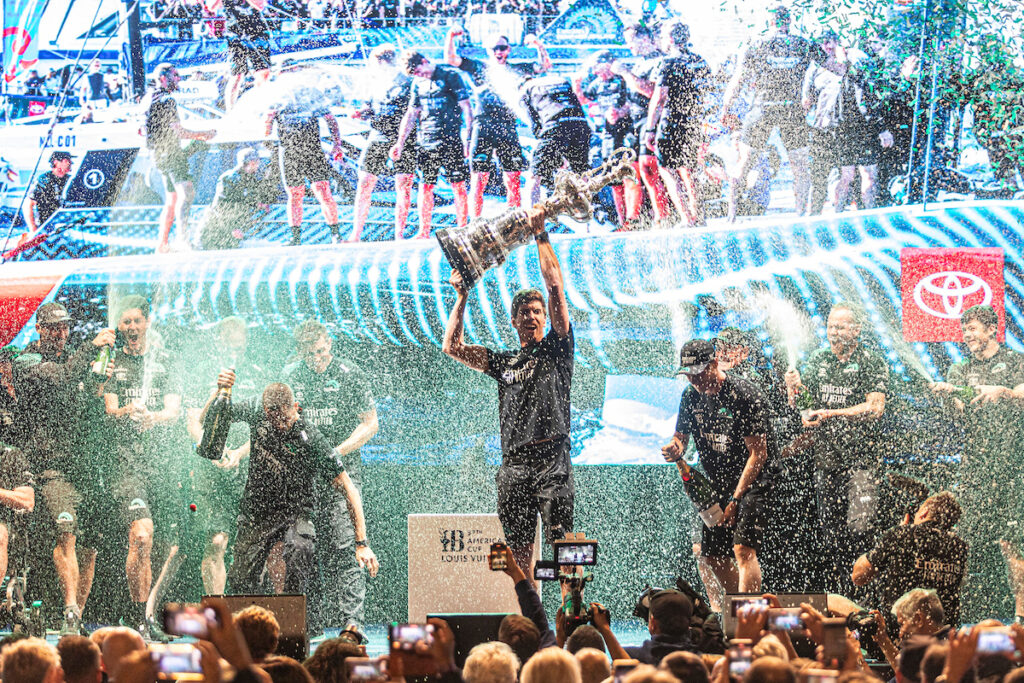
Seven to two—that is the final outcome of the Louis Vuitton 37th America’s Cup in Barcelona following a decisive win for Emirates Team New Zealand, now third time defenders and supreme masters of the AC75 America’s Cup class of their design. While INEOS Britannia had high hopes and no lack of effort in trying, the Auld Mug remains firmly in the hands of Team New Zealand, now awaiting the next challenger and the next chapter of its dynasty.
On a warm and sunny afternoon on October 19, the New Zealand sailing powerhouse delivered its final and convincing blow to the British Challenger of Record on the sixth and final day of racing, stirring a black swarm of New Zealand fans into a frenzy along Barcelona’s waterfront. There were two races scheduled, but the Kiwis only needed one, and it was theirs from the first cross onward.
Scripted to perfection for a Saturday final race, the wind forecast was questionable with the remnants of the previous day’s northerly fighting the arrival of the sea breeze. At the morning race briefing, race officer Iain Murray alluded to the potential of a hard 3:30 cut off, but with only a slight delay, the sea breeze found its footing to the delight of crowds that worked their way to vantage points along Barcelona’s waterfront. To borrow a oft-heard phrase of Emirates Team New Zealand helmsman Nathan Outteridge it was, “all good.”
Going into today’s do-or-die race, the British knew their fate was not with better boat speed, but rather a bare-knuckle approach to the pre-start.
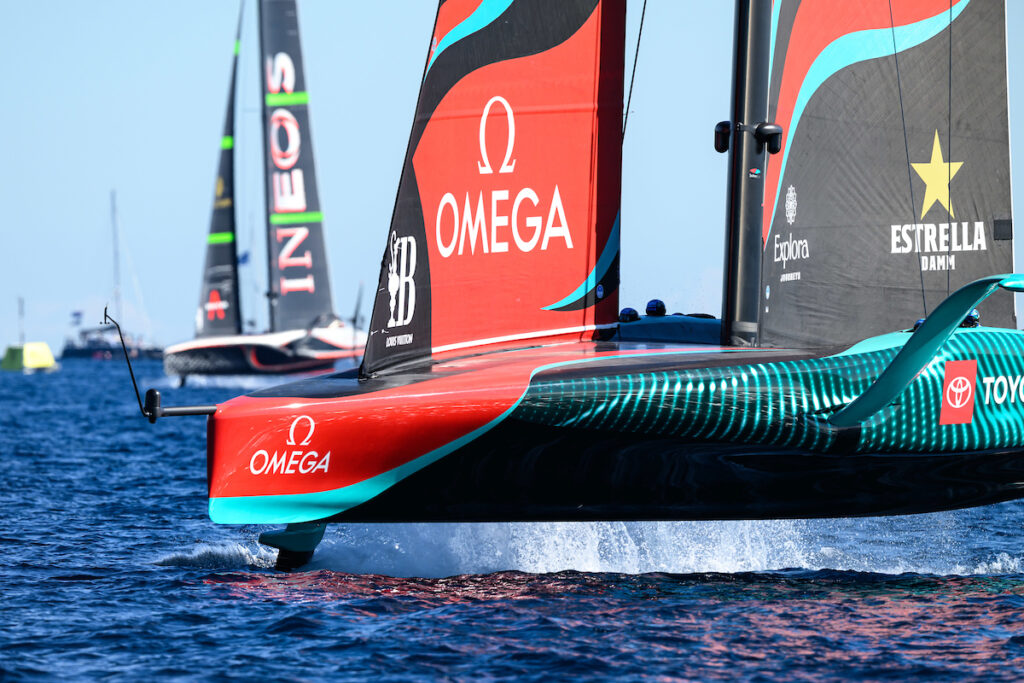
And with 8 knots of breeze, Emirates Team New Zealand entered on port with INEOS on starboard entry going immediately on the offensive, chasing the Kiwis to the bottom of the starting box. New Zealand was ready for it and knew a jibe and tack would set them up for INEOS’s next move.
The British came at the New Zealanders once again, but with the maneuverability that has been the hallmark of their series, the Kiwis tacked and then went right back at them. After a Kiwi push to the line, INEOS was just ahead off the start, but with a slight right the New Zealanders promptly tacked and went for a bigger piece of the shift.
The Kiwis on Taihoro had the first cross by 24 meters, and while the chase was on and close at times over the six-leg, 26-minute race INEOS had no passing lanes. It was wire to wire again for Team New Zealand.
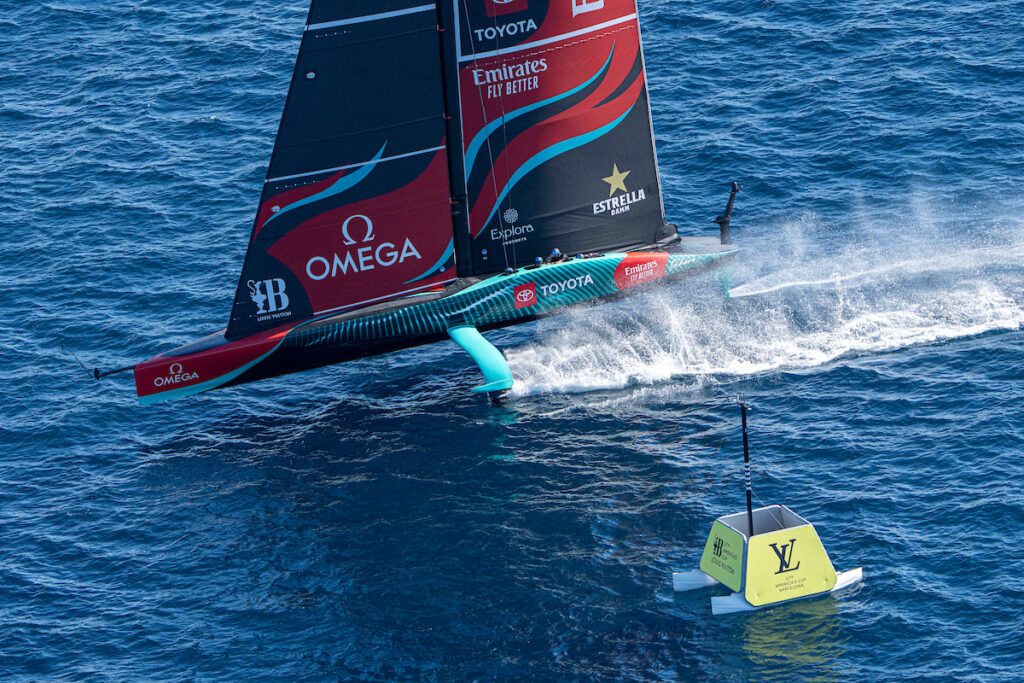
“It’s a surreal feeling, to know we’ve won it again, and seeing the crowd and the cheering,” Burling said after racing. “Our whole team is incredibly competitive and we get along and get the best out of one another—everyone pushing forward and that showed on the racecourse.”
The push to seven started with four straight wins early in the series before the Kiwis stumbled on the fourth day of the regatta with two surprise losses. The team’s regroup from those missteps, Burling said, was his personal highlight of the Barcelona experience—he was happy to silence the critics and get the job done with authority.
Much will be debated and analyzed once the champagne has been sprayed and the sting of the loss fades for the British outfit, but if there’s one undeniable fact of this regatta—Team New Zealand’s Taihoro was the fastest boat of the third-generation AC75s.
Emirates Team New Zealand’s Dan Bernasconi, architect of the rule that produced the most technical sailing craft of a generation says there’s still more to come with the big foilers, whenever that may be.
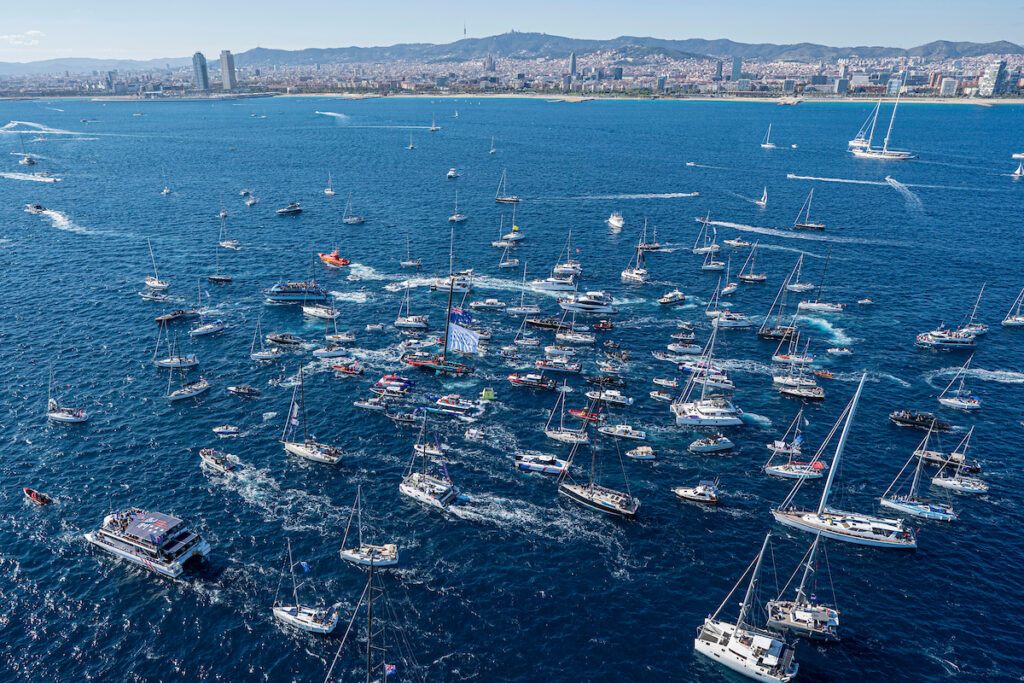
“With the performance of these boats you’re fighting over 10ths or hundreds of knots, but the way you can sail them can make a huge, huge difference,” Bernasconi said about the team’s developments through the Barcelona series that began back in August. “We’ve made real steps forward between the round robins and the final: how to minimize the losses in tacks and jibes, roundups, bear-aways, what you do in situations where the winds in a different direction for the waves, how you trim the sails, high modes, low modes, and positioning on the racecourse.”
Earlier in the series Burling had said they’d been modifying how they use the power team’s input and while Bernasconi declined to share specifics, he said, “there are a lot of decisions about where we direct the power. There’s a very tight limit of power to use, and you’ve got about 20 functions controlling the sails. There’s a lot of complex logic there, and we’ve been working on that way all the way through. It’s one of the few things you can change right until the end of the Cup, as to how you direct that power.”
Was maneuverability a real strength of the platform? “It’s been a massive learning curve for all teams where being able to minimize losses in tacks and jibes. I think we’ve seen these boats match raced very hard, and if you can save 5 meters in every tack compared to the other guys, that makes a massive difference.”
While much lip service had been given to the similarities of the boats in terms of all-around performance, Bernasconi—understandably—was perfectly happy with the package that got the job done in a wide range of conditions, but especially in the America’s Cup matches themselves.
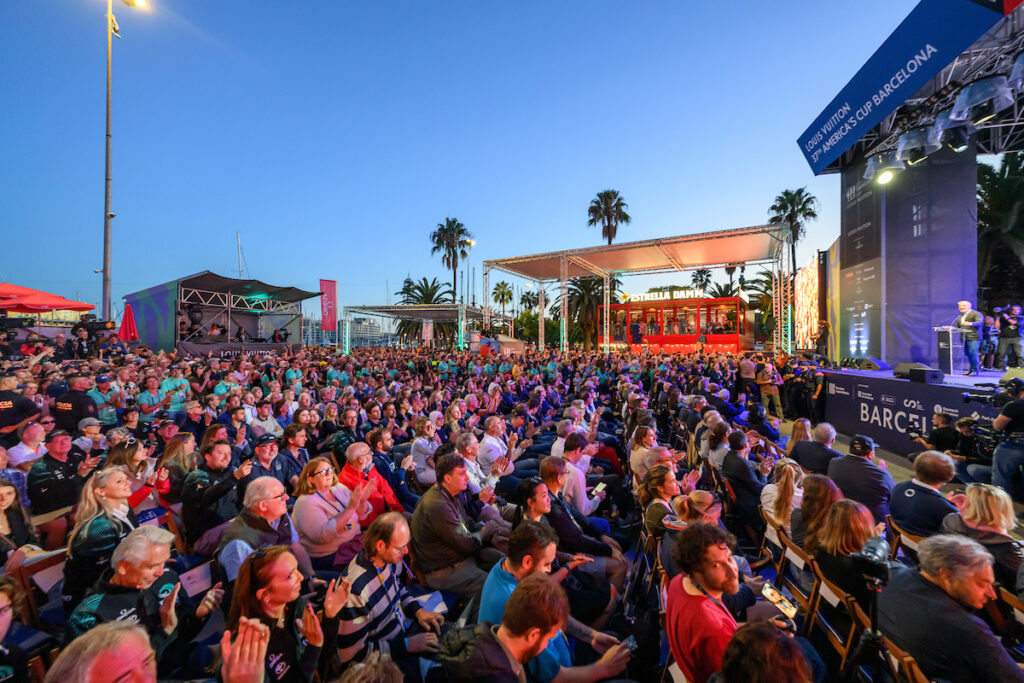
“I think we had a slight edge in the conditions that we raced in,” Bernasconi said. “I think the two boats did target slightly different conditions. If every day had been in 18 to 20 knots of breeze would the results have been the same? I don’t know. You’ve got to pick your design and you have to put the target somewhere. Of course, we knew it could be 18 to 20, and we designed a boat which wouldn’t be bad in those conditions, but we wanted to be absolutely the fastest boat out there in 8 to 12.”
While the tradition of the America’s Cup is to have the next Challenger of Record step forward as soon as the Match is won, there were no such formal proceedings made known. Instead, the parade of yachts and small craft that had lined the racecourse to witness Team New Zealand’s historic third win on the water followed them into Port Vell, for the speeches, the champagne and the party over Kiwi Corner that will no doubt last until the sun rises again over Barcelona.
Whether the next Cup match remains in Spain or moves to the Middle East, as some rumors claim, is unknown, but one thing for certain is INEOS is not going anywhere, or at least not Ben Ainslie, who said, “See you next time.”

